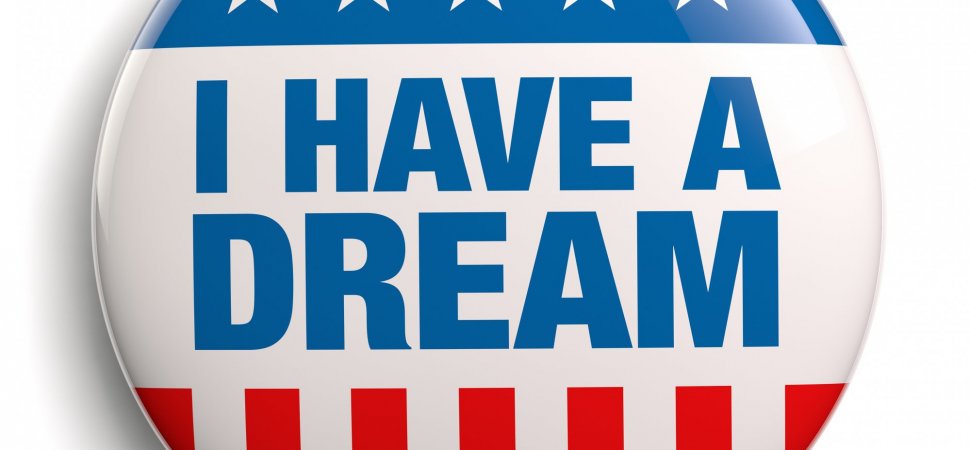
As we take time to remember the life story Martin Luther King Jr, we typically discuss his role as a leader, a hero, and an activist. What we talk about far less often is how good he was at selling. But think about it: King faced a powerful and hostile audience, asked them to accept a message completely at odds with their history, upbringing, and education, and succeeded.
Here’s how he managed to do it…and what you can learn from his example.
Focus on the Individual
There’s a famous photo from the Birmingham civil rights protest of 1963 that shows a young African American man being attacked by a vicious dog at the end of a white policeman’s leash. If any image is responsible for turning the tide of public opinion against Jim Crow, it is this one. But what most people don’t know is how different the full story of this instance was from what the photo depicts.
As it turns out, the young civil rights activist in question, Walter Lee Fowlkes, had been schooled in the benefits that would come from press coverage of police brutality. As such, he went out of his way to taunt the dog that would go on to attack him moments before the picture was taken. And while there was certainly plenty of police brutality going on that day, the officer holding the leash was actually one of the better ones in the bunch–the photograph captured him in the process of trying to restrain the dog so it would not bite him.
But in this case, none of these details mattered. You see, King understood that his market–mainstream white America–had, for decades, not been swayed by facts about the masses of Black Americans suffering beatings, lynchings, and intimidation on a daily basis. But he knew that the image of one peaceful-looking young man being attacked by a Doberman Pincher would move their hearts, so he arranged for that image to come to light.
How do you present whatever it is you’re selling? Do you talk about how great your products are or list benefits they provide? If so, stop it. Instead show one example of a single person whose individual life was made better or whose pain was relieved because of what your business does.
Wrap the New In the Familiar
In the late 1950s and 1960s, African Americans had every reason to hate the United States. A century after a Civil War that was supposed to have freed them from servitude, they still lived under a system that enforced their status as decidedly inferior citizens.
It would have probably surprised nobody if Martin Luther King Jr. had used his speaking ability to disparage the nation, its system of government, and society as a whole.
Fortunately, King was too talented a salesperson to do that.
Instead, he co-opted the language of the institutions most dearly cherished by mainstream America. For example, in a notable sermon at the Ebenezer Baptist Church in 1965, King quoted entire passages of the Declaration of Independence, calling its message of equality “a great dream”. During the March on Washington, he referred to our “sweet land of liberty.” And in the last speech of his life, he quoted the Battle Hymn of the Republic lyric: “Mine eyes have seen the glory of the coming of the Lord.”
In an age where “disruption” is among the most common business buzzwords, many entrepreneurs lose sight of the fact that not everyone finds it so exhilarating to plunge into the great unknown. In fact, evolution has programed most members of our species to fear large-scale change, even if that change will be good for us or for society.
Martin Luther King, Jr. got around this by wrapping his message of intense change with the language and concepts of the trusted and familiar. You should do the same. Instead of trying to bowl people over with the new horizons your product will deliver, make the case that what you were selling will get them more of what they already know they want.
Practice Radical Simplicity
The idea that human beings should be equal under the law seems like common sense, but the realities of getting racial integration to take hold in America was a complex proposition. Entrenched systems of education, agriculture, and even marriage were intertwined with racial segregation. Knowing this, when it came time to make his now-famous speech for the March on Washington, Martin Luther King Jr. knew he wouldn’t be able to win people over by presenting a logical case for integration.
Instead, he painted a picture.
“I have a dream that one day on the red hills of Georgia sons of former slaves and the sons of former slave-owners will be able to sit down together at the table of brotherhood.”
“I have a dream that…one day right there in Alabama little black boys and black girls will be able to join hands with little white boys and white girls.”
“I have a dream that one day every valley shall be exalted, every hill and mountain shall be made low.”
Human beings are visual creatures. We are emotional creatures. We are safety-seeking creatures. Martin Luther King Jr knew this and used it to great effect. Do the same and your sales will grow to support every one of your dreams.
